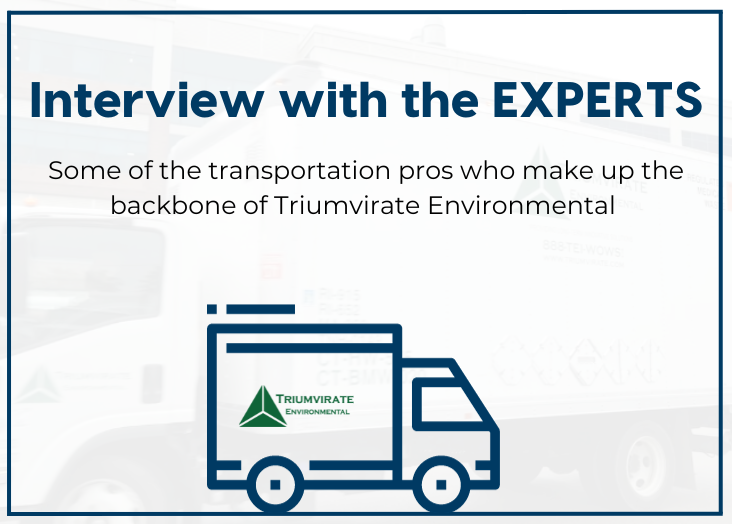Is your laboratory clean? Reduce liability with laboratory decommissioning
Posted by
TEI Experts November 19, 2014
We hosted a lab decommissioning webinar featuring industry expert Craig Sasse. Find a copy of the slide deck used as well as the text below.
Our Key Message
Thoughtful decommissioning can manage potential liability.
What Will You Learn?
How to begin planning for changes in your laboratory. Questions and information to guide a good decommissioning. How clean is clean? What are industry drivers and expectations?
This will help manage
• Relocations • Internal moves • Renovations • Closure • Owned vs. non-owned spaces
Where to start?
Schedule and Logistics. Due Diligence. Unused chemical & equipment disposal. Stop research. Movers, riggers, venders. Assessment. Remediation. Assess for remaining EH&S concerns. Finalize closure. Decommissioning report
Planning and Scheduling
• Identify all stakeholders • Identify obligations in lease agreement and in organization • Financing • Site specific laboratory information and investigatio • Coordinate the end of research, • Equipment handling • Research material storage needs • Decontamination logistics • Vacancy of space • Licensing, such as for radioactive materials, >45+ days for processing
Considering Lease Obligations and Institutional Risk
• Lease obligations are typically vague • No set regulatory guidance • Uncertainly if space is “clean” • Claims when vacating space • Unexpected costs • Residual chemicals (surfaces, drains, HVAC, etc.) • Contractors and worker exposures • Poor housekeeping • Unknown or poorly documented decontamination
The American National Standard/AIHA Z9.11–2008
This will help manage
• Relocations • Internal moves • Renovations • Closure • Owned vs. non-owned spaces
Where to start?
Schedule and Logistics. Due Diligence. Unused chemical & equipment disposal. Stop research. Movers, riggers, venders. Assessment. Remediation. Assess for remaining EH&S concerns. Finalize closure. Decommissioning report
Planning and Scheduling
• Identify all stakeholders • Identify obligations in lease agreement and in organization • Financing • Site specific laboratory information and investigatio • Coordinate the end of research, • Equipment handling • Research material storage needs • Decontamination logistics • Vacancy of space • Licensing, such as for radioactive materials, >45+ days for processing
Considering Lease Obligations and Institutional Risk
• Lease obligations are typically vague • No set regulatory guidance • Uncertainly if space is “clean” • Claims when vacating space • Unexpected costs • Residual chemicals (surfaces, drains, HVAC, etc.) • Contractors and worker exposures • Poor housekeeping • Unknown or poorly documented decontamination
The American National Standard/AIHA Z9.11–2008
• Useful framework and process for effectively performing laboratory decommissioning. • Methods are scalable and applicable from initial planning through reporting. • Presents methods to document and verify decommissioning by characterizing acceptable risk.
Decommissioning Process A reports limit potential liability when occupying, leasing or leaving space. Due Diligence Interviews License & Permit Management Materials, Plans and Diagrams Decommissioning Define Areas and Assess Equipment, Surfaces, Infrastructure Means & Methods Documentation Assessment Documentation Statement of “Acceptable Level of Risk” Signed by “Qualified Individual”
What is in your laboratory?
Decommissioning Process A reports limit potential liability when occupying, leasing or leaving space. Due Diligence Interviews License & Permit Management Materials, Plans and Diagrams Decommissioning Define Areas and Assess Equipment, Surfaces, Infrastructure Means & Methods Documentation Assessment Documentation Statement of “Acceptable Level of Risk” Signed by “Qualified Individual”
What is in your laboratory?
• Inspection • Interviews • Permits and Licenses • Chemical Inventory • Landlord/Tenant Records • Incident Reports • Waste Management • Flammable Storage Permit • DEA Controlled Substances Permits • RCRA Generator Information • Radioactive Materials License • Ionizing Radiation Source Registration • Wastewater Discharge Permit • Laboratory Animal Use Permits • rDNA Permits • Biological Agents Permits • Potent Compounds
Laboratory Assessment and Decontamination
Laboratory Assessment and Decontamination
• Bench Tops, Drawers, Cabinets • Floors and Walls • Chemical Storage Areas • Cold Rooms • Animal Care Area • Rad. Use Areas • BL1, BL2, and BL3 Labs • Plumbing • Wastewater System • Fume Hood Ductwork • Lab Equipment – BSCs
Remediation
Remediation
• Consider possibility of deviations • Hg, metals, EtBr, azides, radioactive, HF, perchlorates, pH, potent compounds, etc. • Decontamination procedures are clear and appropriate • Discovery of hidden collection of chemicals • Secure entry pre- and post-decontamination • Mark decontaminated rooms and equipment
• Lab ventilation - local exhaust and fume hoods • BSCs – certified • Sink p-traps • Wastewater systems – last step • Decontamination wast
Closure and Reporting
• Lab ventilation - local exhaust and fume hoods • BSCs – certified • Sink p-traps • Wastewater systems – last step • Decontamination wast
Closure and Reporting
• Visual inspections and photographic documentation • Layout and before/after pictures • Document the cleaning protocols • Assessment sampling documentation with COCs • Waste disposal documents • Review of plan requirements, deviations, and QA/QC • Statement of “Acceptable Level of Risk” • Signed by “Qualified Individual”
Action Plan
Start with the end in mind. Schedule, but be flexible. Define lease and decommissioning obligations. Licenses and equipment managemen
Stay tuned for a transcription of his live Q and A. To get your lab project started, download out lab decontamination checklist.









.png)